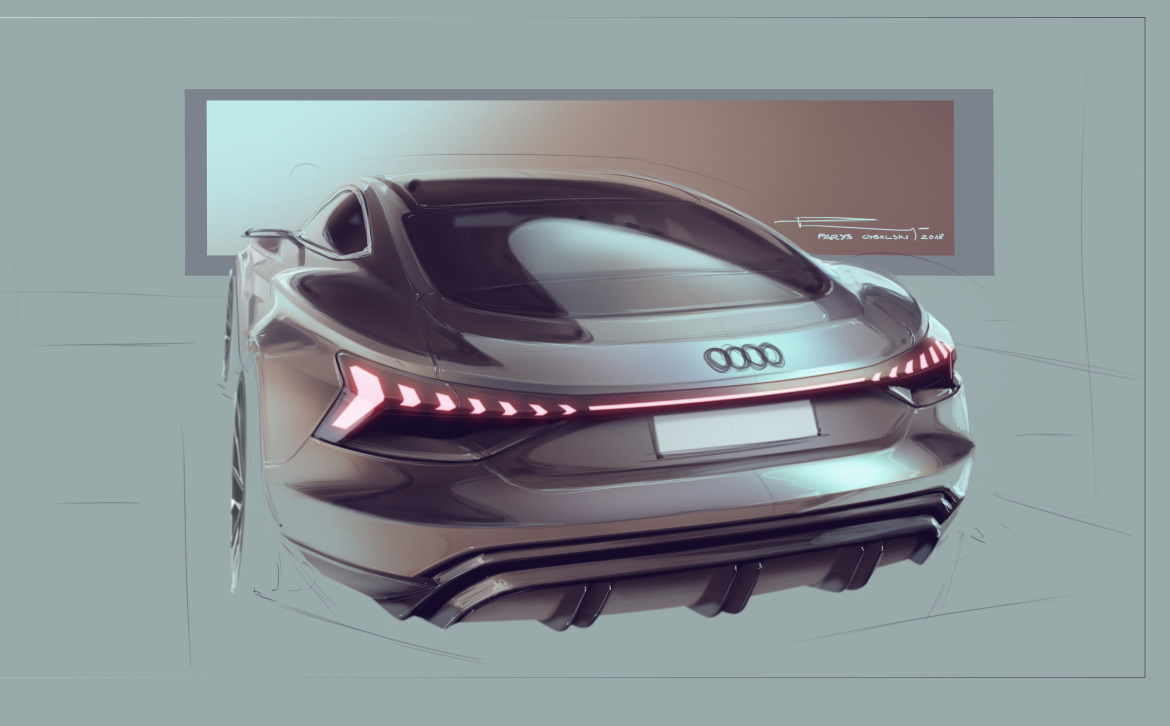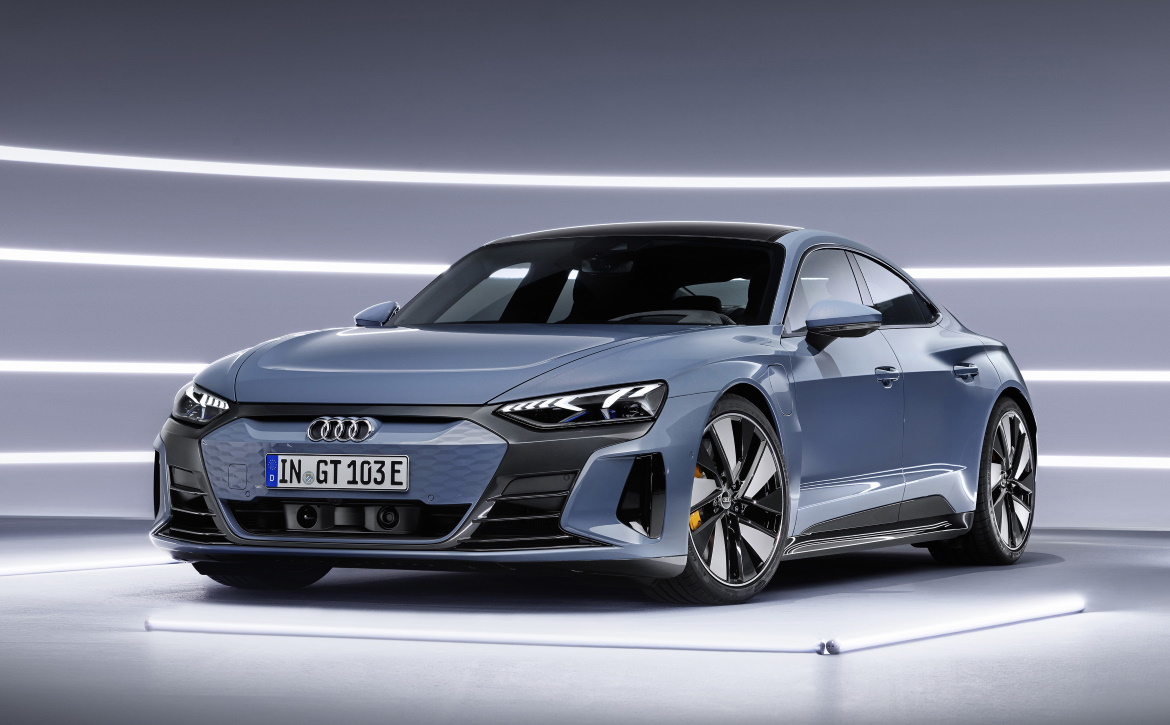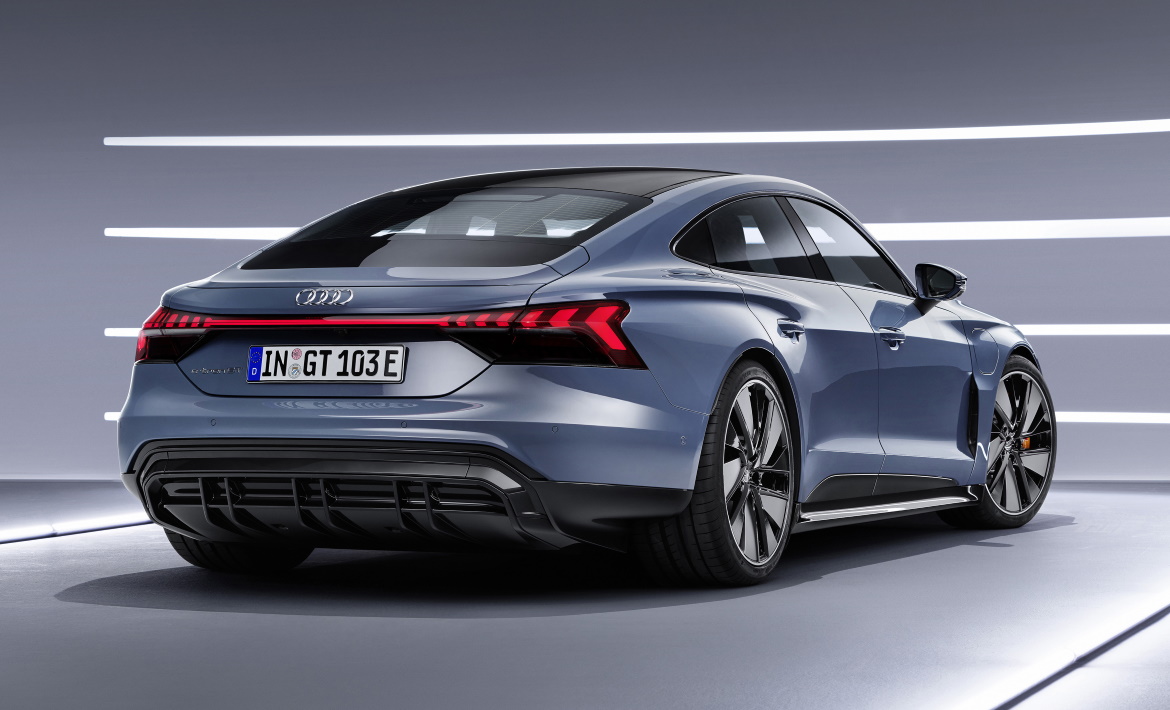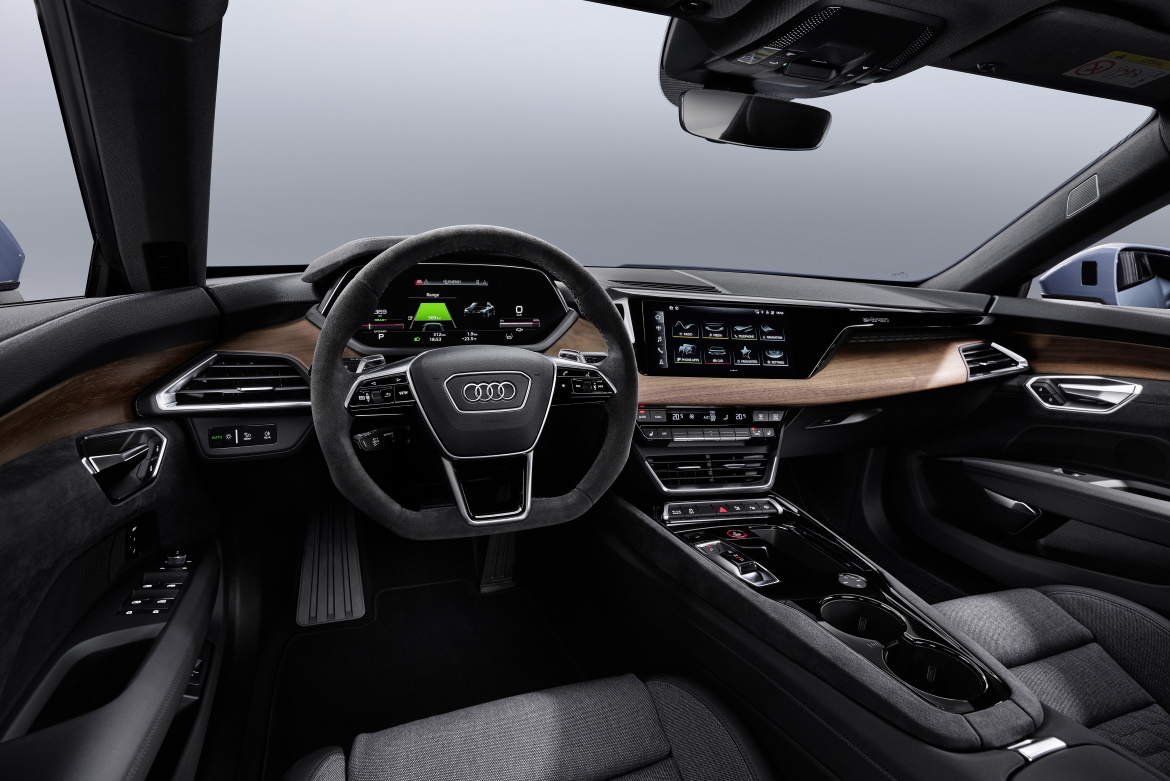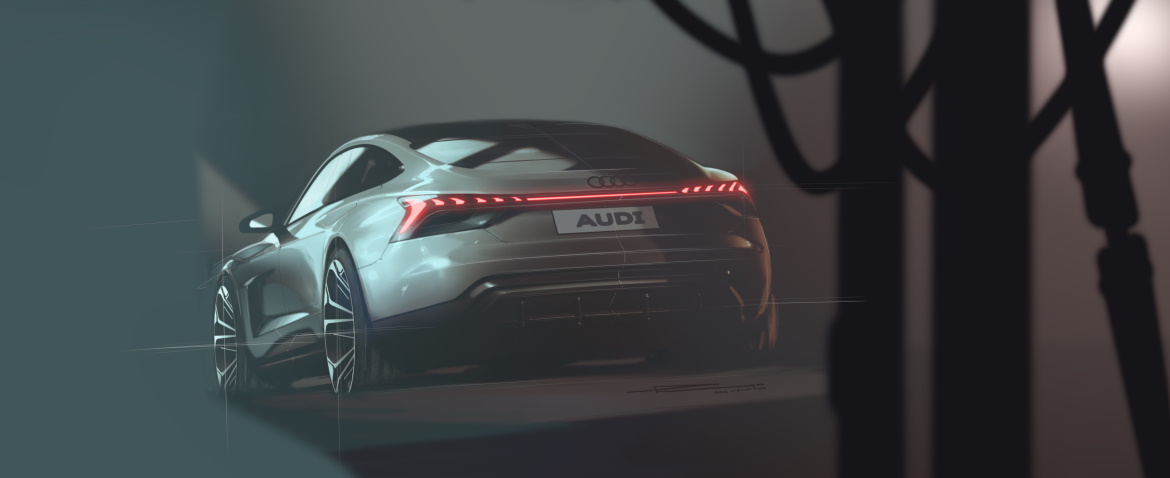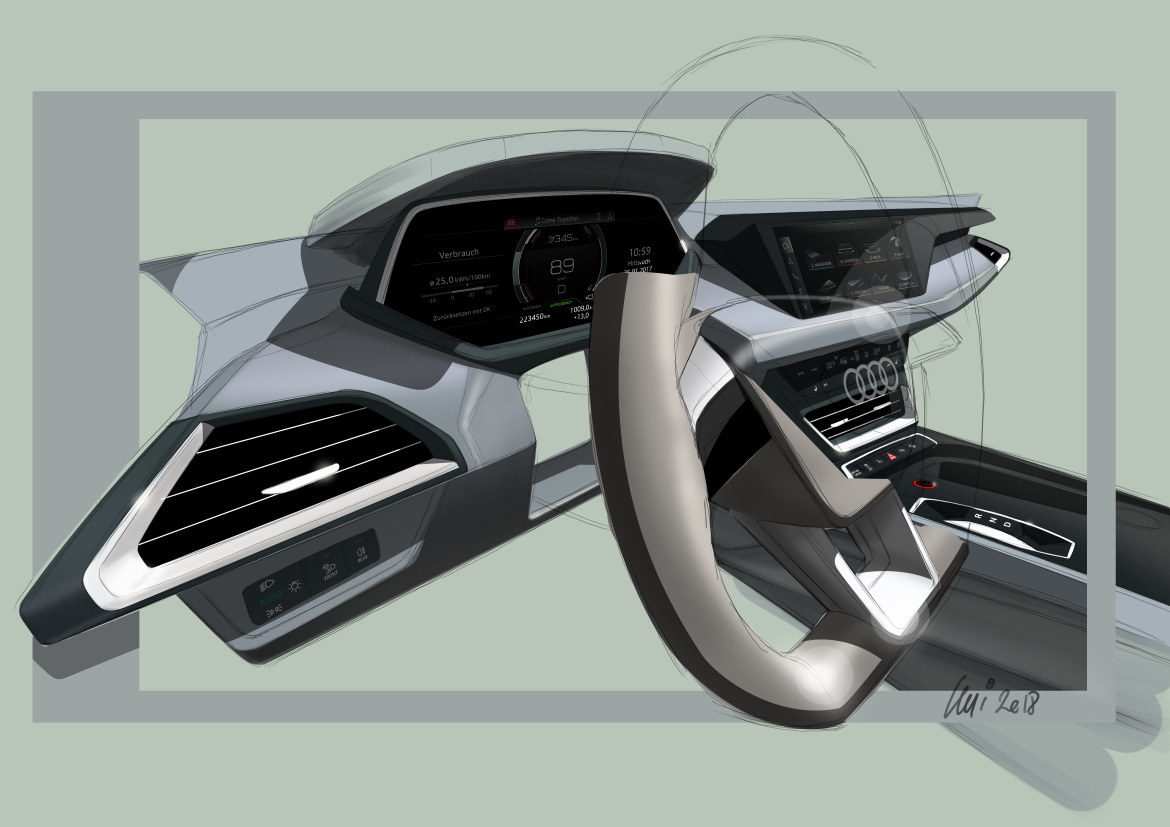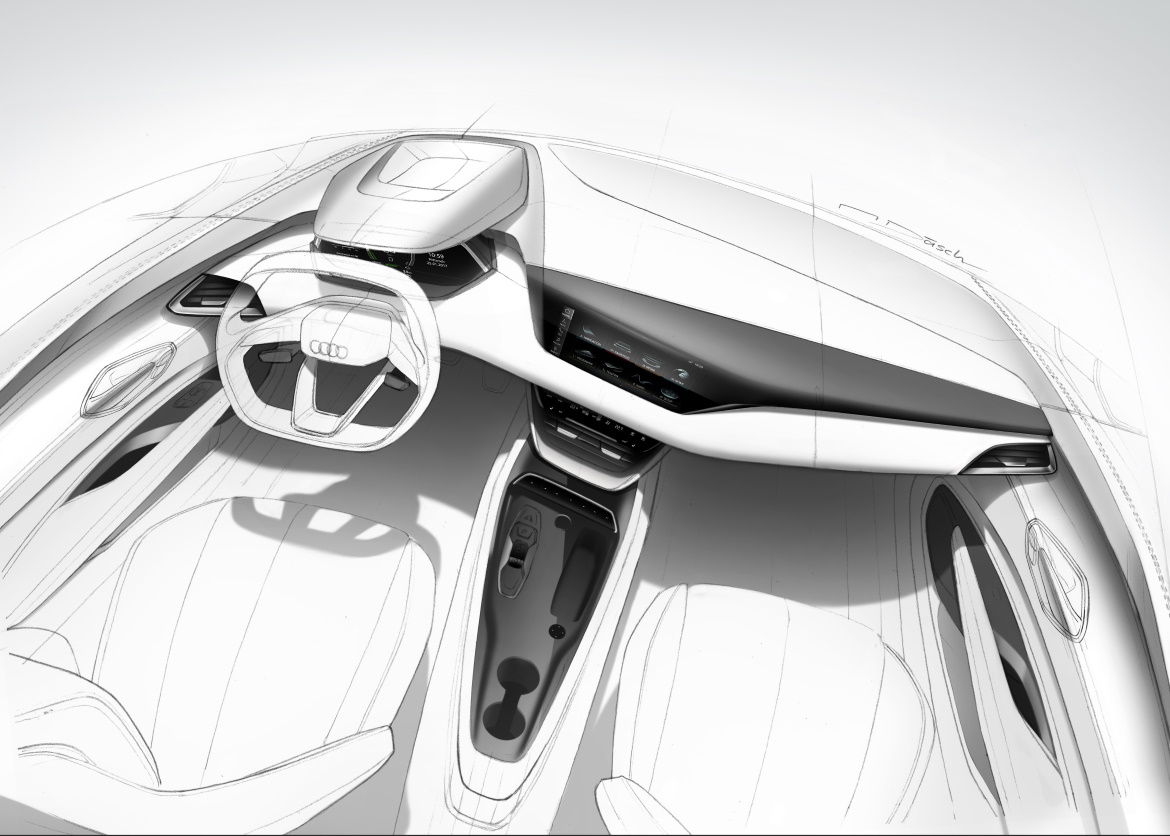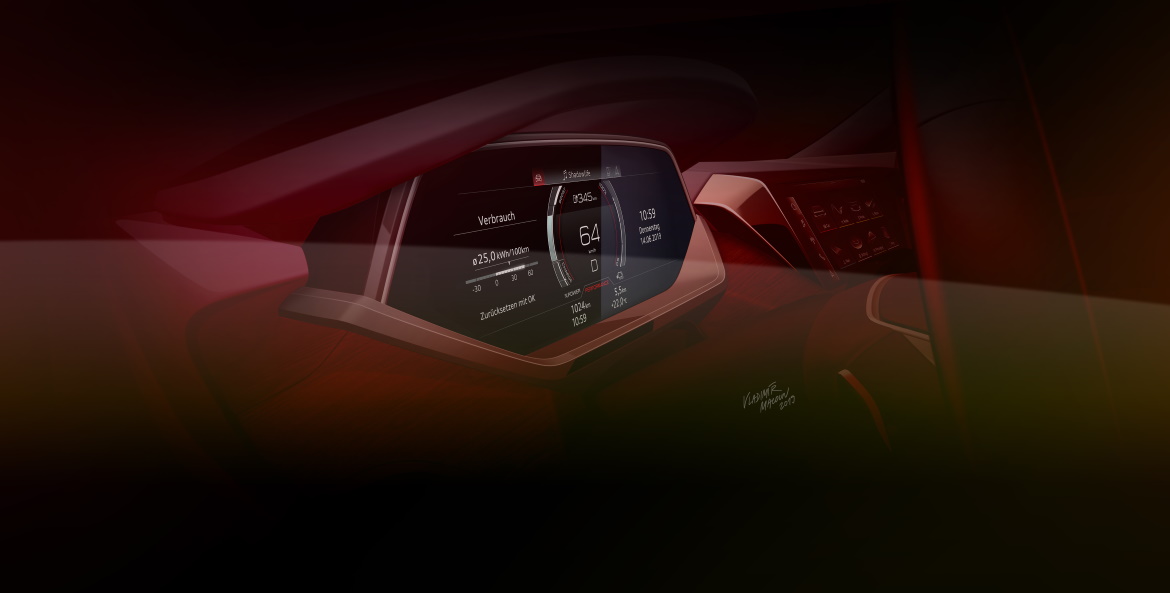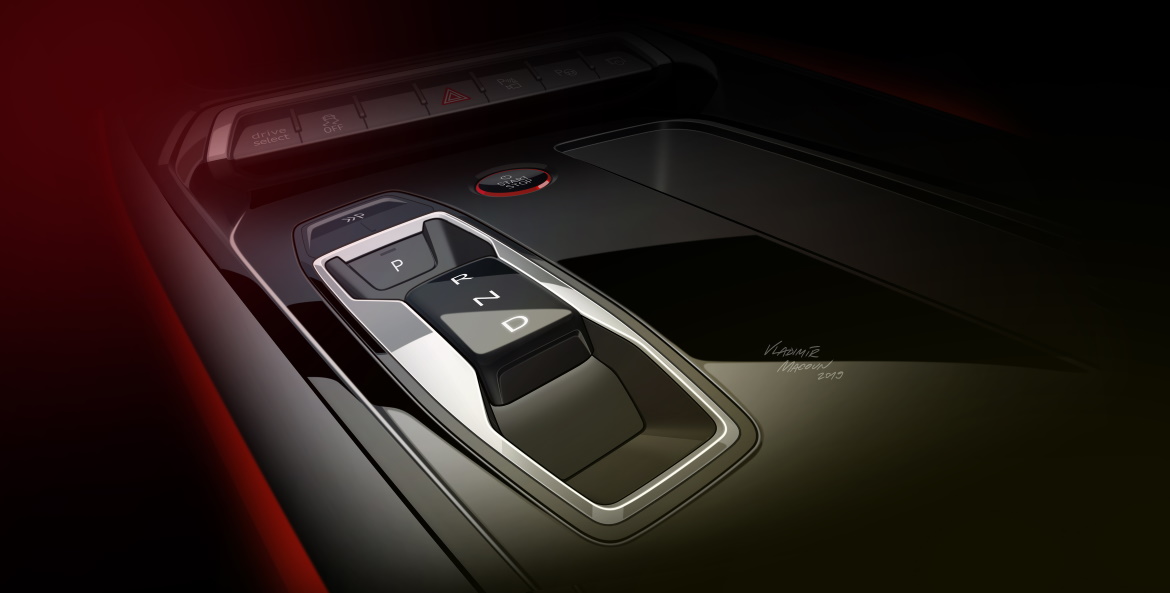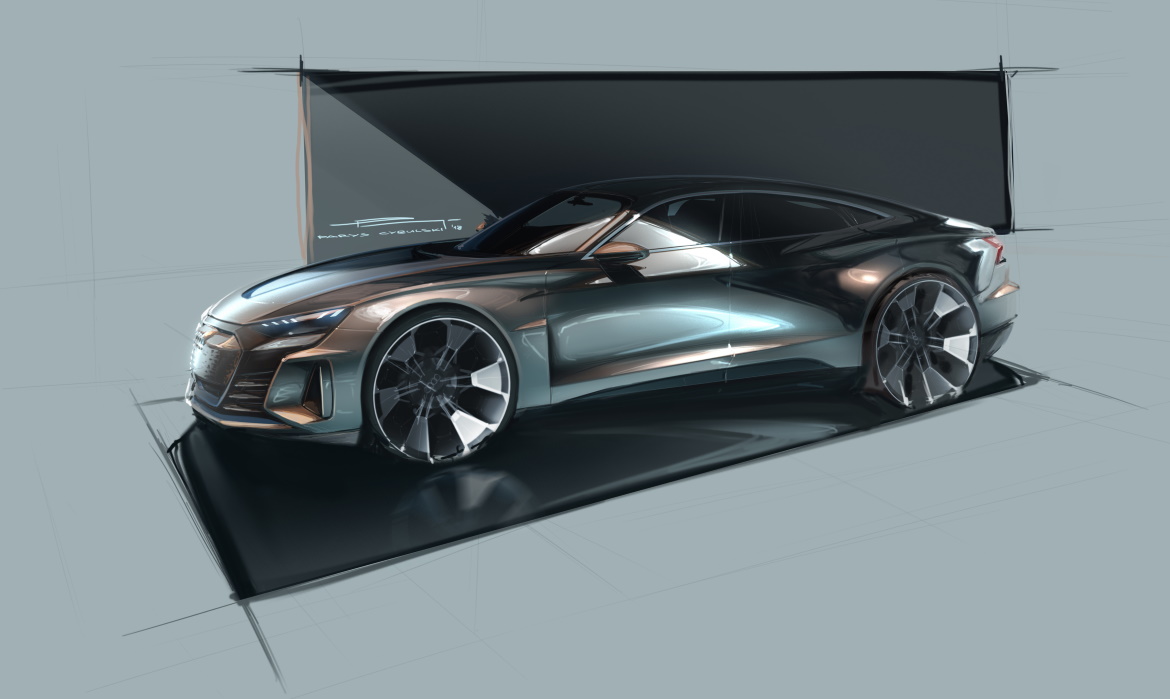“Beautiful, powerful, technological’. Markus Duessman, CEO of Audi, unveils the e-tron GT, the German manufacturer’s first model built on the J1 platform, dedicated expressly to zero emission cars and shared with the Porsche Taycan. The e-tron GT is a four-door coupé with striking lines and true sports car performance: it will be available in two versions – e-tron GT and RS e-tron GT – with a power output of 530 and 646 bhp respectively delivered by two electric motors powered by an 85 kilowatt-hour battery pack. The declared range measured in the Wltp homologation cycle is approximately 488 or 472 kilometres (GT and RS e-tron GT).
The style of this large four-door coupé (5 metres long, 1.9 metres wide and 1.4 metres high) certainly doesn’t go unnoticed. The credit goes to the pencils of the team led by Marc Lichte, head of Audi design: “It’s the most beautiful car I’ve ever designed”, says the German designer during the virtual presentation. The production car has kept almost intact the shapes anticipated by the concept car of the same name presented in 2019 at the Geneva Motor Show. The proportions are all there: a long wheelbase (the battery pack is in the floorpan), a steeply sloping roofline, a tapered rear end with full-width LEDs and a striking front end where the flashy grille is replaced by an elegant insert to match the bodywork. The rest is done by the large 19 or 21 inch wheels whose design aids aerodynamics by reducing air resistance, to achieve a Cx of just 0.24.
The general layout of the interior follows that seen on the German manufacturer’s most recent models. “The roofline is very low, but the roominess is also perfect for those in the back thanks to the variable height battery modules,” explains Lichte. From the two large 10.1-inch and 12.3-inch displays (instrumentation) you control the infotainment system and the complete package of driver assistance systems, and you can even choose different sounds that are transmitted to the exterior and interior of the vehicle.
The research into sustainable colours and materials was particularly demanding and was the work of Simona Falcinella, head of the Color&Trim department in Italy. By opting for the “leather free” package, classic leather upholstery is dispensed with in favour of combinations of faux leather and Kaskade fabric or Dinamica microfibre. In both cases, recycled materials are used, such as polyester fibres made from plastic bottles. “The premium effect is guaranteed,” says Simona Falcinella.


